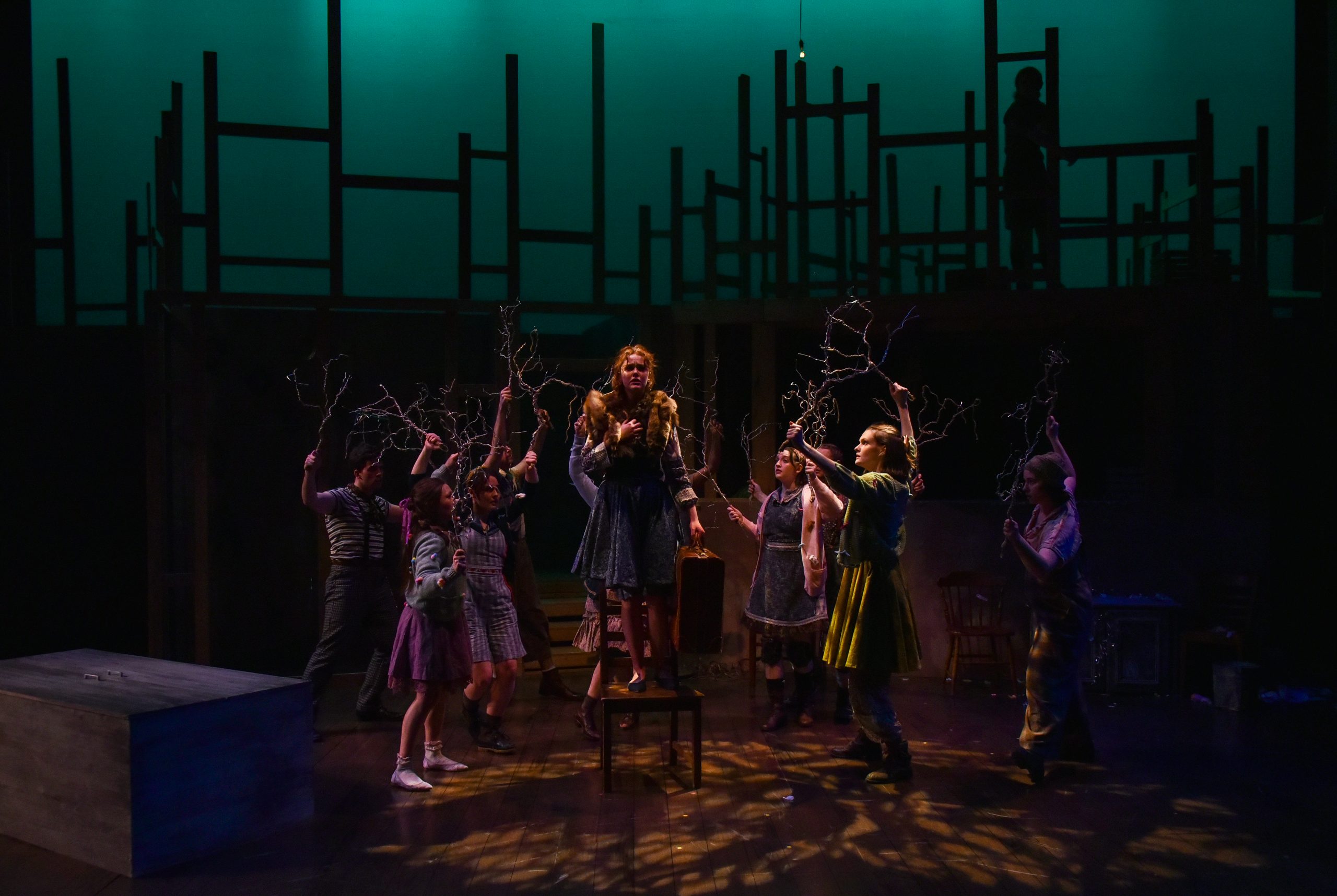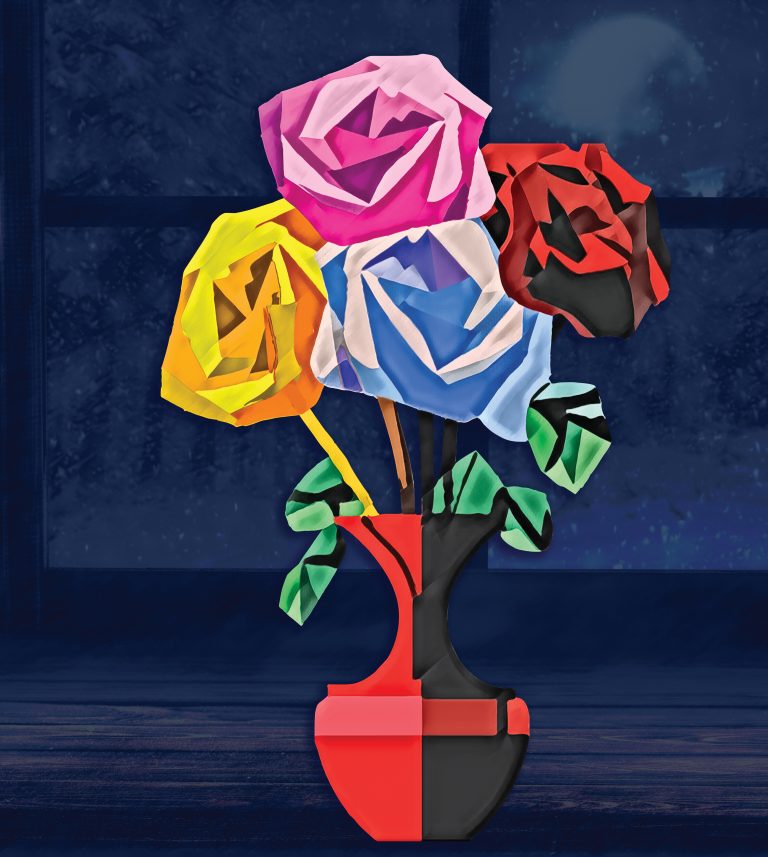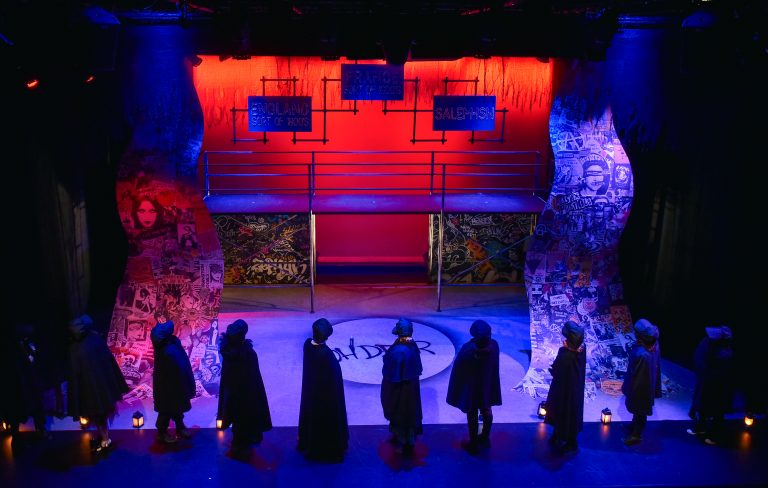Dramaturg’s Note | THE SECRET IN THE WINGS
by Dramaturg and Assistant Director, Brenda Huggins
While ancient mythology across cultures is rooted in history, nature, and religious practices, folk tales capture rituals and cultural values passed down through the spoken word from generation to generation. The act of collecting stories from an oral tradition onto the written page became popular in the 17th century, and began to solidify nationalistic fairy tale canons.
The source material for “The Secret in the Wings” includes six obscure fairy tales from the Brothers Grimm “Children’s and Household Tales,” (1815, Germany) and Calvino’s Italian Folktales (1956, Italy) collections, with evocative images of an ogre and a rose – taken from Charles Perrault’s “Beauty and the Beast” (1697, France.) – woven throughout. The haunting scenes explored in The Three Blind Queens; Stolen Pennies; The Princess Who Wouldn’t Laugh; The Three Snake Leaves; Allerleira or Grimm’s “Thousand-furs;” The Stolen Pennies; and The Six Swans, or Silent for Seven Years unfold at a familiar fairy tale like speed, yet each story blends into one another before they come to their conclusions in a whimsical and surreal dreamscape.
When director and playwright Mary Zimmermen and an ensemble of actors at the Lookingglass Theatre Company in Chicago first devised the script for “The Secret in the Wings” in the early 1990’s, the individual names of the actors were written into the text. Characters in fairy tales are often unnamed, holding titles based on occupation or social class including “Kings” and “Queens” or the “miller’s son,” which activates a child’s imagination to place themselves into the stories. The script calls for the ensemble members of each production to do the same, and the Emerson actors on our stage lend their own names to the characters as they step into each role.
Austrian-born American psychologist Bruno Bettleheim studied the role of fairy tales within childhood development and theorized that fairy tales do not pertain to the here and now, and that this vagueness symbolizes a departure from the concrete world of everyday life into a realm of magic and fantasy. It is through this unraveling of reality that children are able to grapple with developmental issues including parental relationships, power dynamics, fears, and shame. Bettlehiem further theorized that the fantastical nature of these stories is an important device to communicate problems that do not represent a literal or external world, but rather an inner process taking place in a child’s mind.
Each tale in “The Secret in the Wings” explores themes of love, shame, loyalty, and transformation through the playful lens of the inner child; where the basement is simultaneously an enchanted forest, and naughty boys are turned into swans. Creating a theatrical experience for an adult audience, Mary Zimmerman playfully experiments with the dark themes found in these lesser known tales including violence, grief, incest, and murder. The play delves further into the exploration of love, and worthiness of love, through images of guilt and shame. Secrecy and silence is the environment where shame thrives, and empathy is the cure. The hero’s journey found at the center of “The Secret in the Wings” leaves us with a sense of redemption and hope that we are indeed worthy of love. It is through speaking our secrets to those who will listen that we are able to conquer shame, and heal its wounds.



